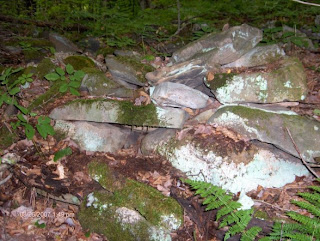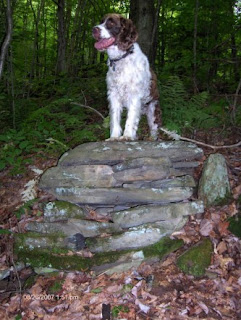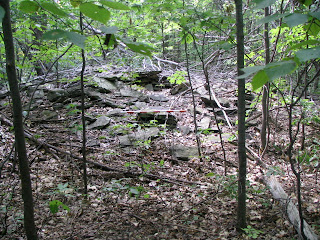In a previous post a reader "Norman" left a comment that stated his belief that the Adena were not associated with stone structures. He felt that the Hopewell culture was more directly connected to the culture that created these stone structures. The information that I included in my previous post that addressed the question of who created these stone cairns was derived for the most part from the writings of David Robinson.
David passed away a few years ago and his wisdom is sorely missed. He like myself was an amateur archaeologist. Like anyone interested in past cultures he attempted to assign a label to the people that he was trying to understand. I have read many of these labels: Adena, Hopewell, Owasco, Massawomeck, Woodlands, Burial Phase 1, Burial Phase 2. I understand the need to do this but I also think it is a flawed concept. I think about the community that I live in. We might identify it as an Anglo-Christian community, but that is misleading. We have a strong Mennonite community as well as people who have African, Chinese or Mexican heritage. The world is not black and white.
So what do we know? There was a culture that lived in this area before the Seneca. They have been called the Owasco culture. They are believed to have spoken the Algonquian language. David Robinson felt they were connected to the Adena
The Owasco were descendants of the Adena. The Once mighty Adena were in a regressed state when their culture changed enough so that archeologists considered them to have become a different people, the Owasco, around 1000AD in New York State, according to William Ritche> Even if they had been in a more regressed state than the later Adena, the Owasco were different from, and seem to have been more advanced, except in warfare, than the tribes that later made up the Iroquois. This was taken from David's article "The Seneca Serpent Legends" in the summer 1998 issue of the Neara journal.
Maybe it is more accurate to call the previous culture Hopewellian. To date I don't know the answer. Who ever made these structures seemed to have a connection with people in New England, Delaware, Georgia, etc...
The reason that I created this blog was to connect with people that can provide information about these ancient people and share ideas like Norman did. I love a mystery and riddles. I look forward to hearing from other readers.











